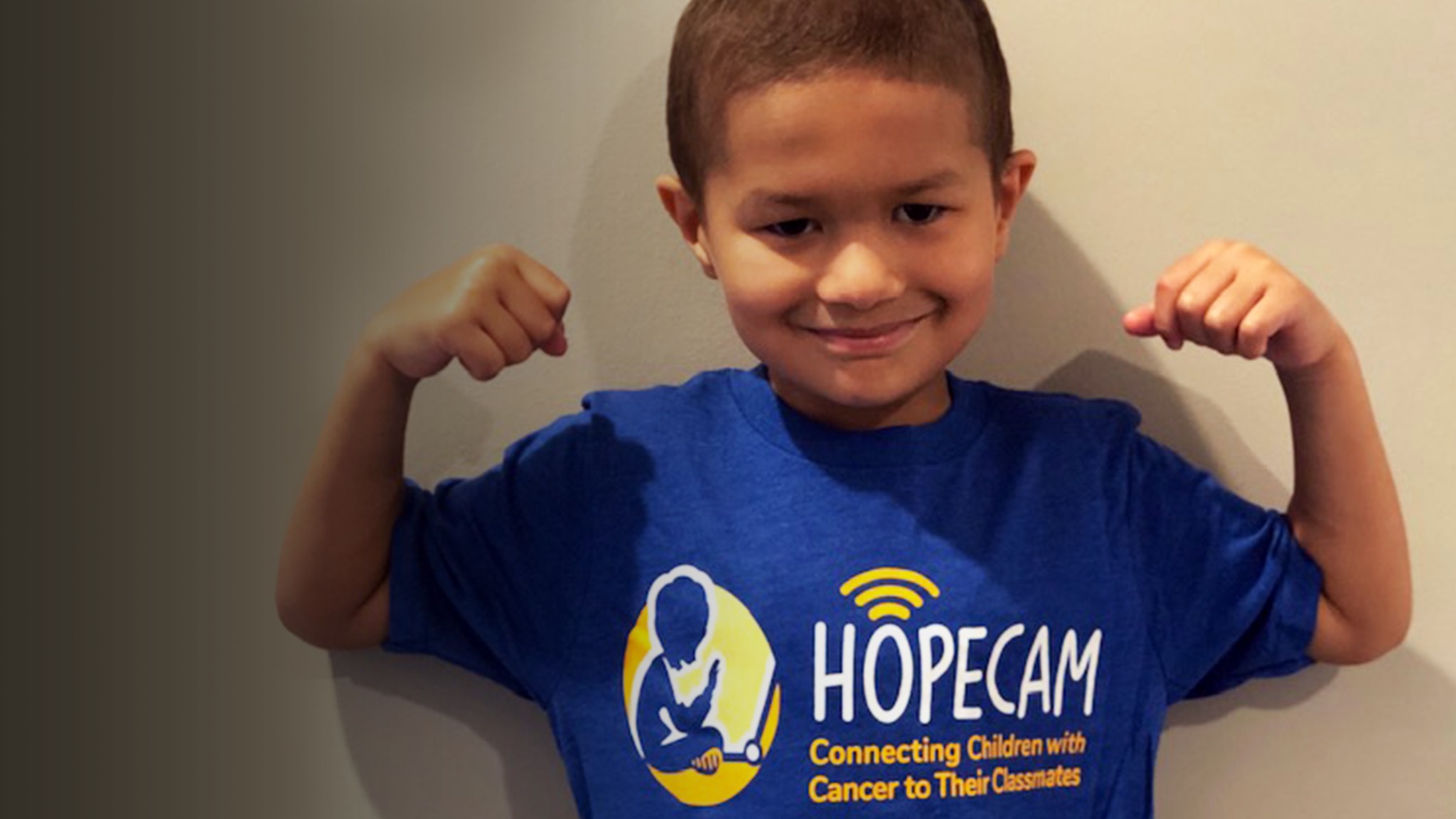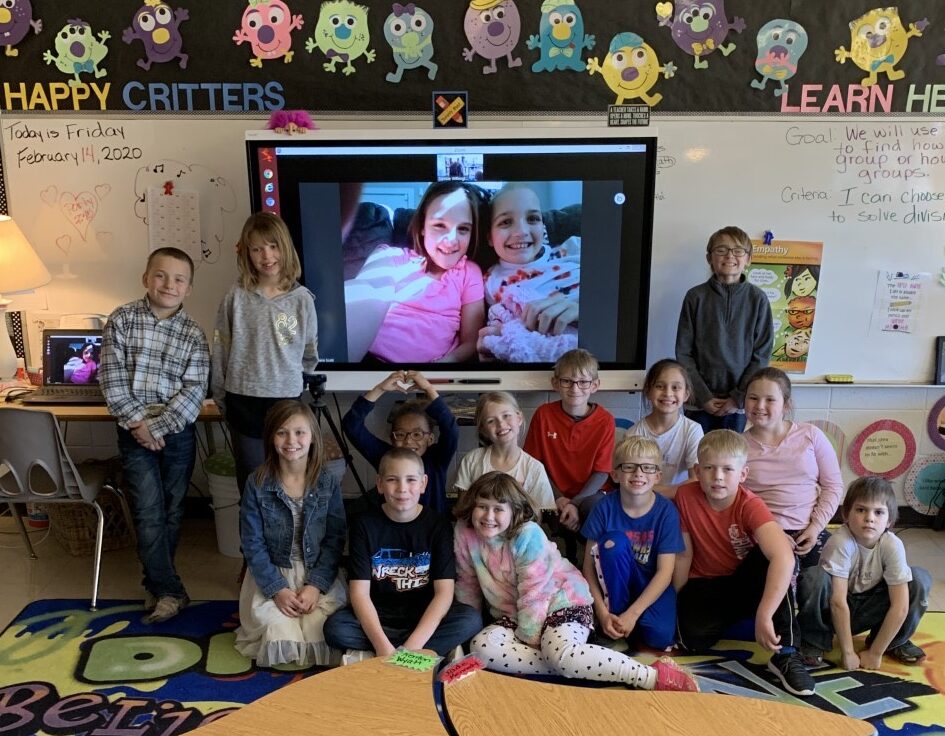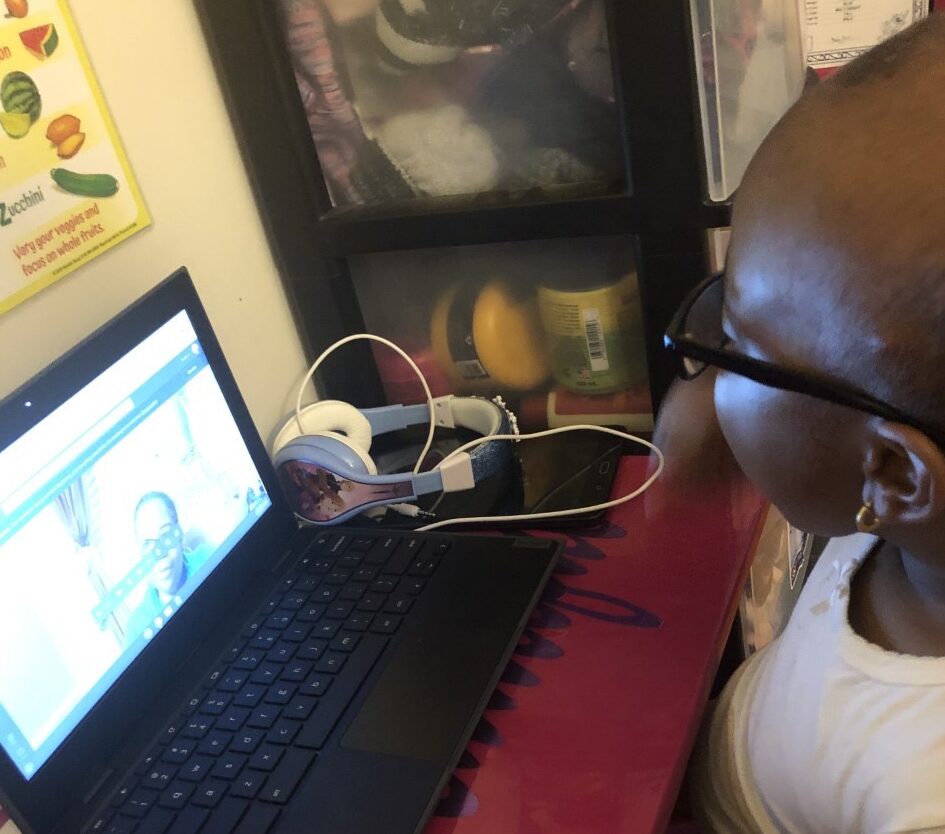Bringing Kids With Cancer and Classmates Together
A child’s cancer diagnosis can make parents feel overwhelmed, even powerless. When Len Forkas’ nine-year-old son Matt was diagnosed with Leukemia in 2003, he noticed his treatment impacted Matt’s ability to keep up with his school community, leading to feelings of loneliness and social isolation. These were symptoms that Forkas could help address. Forkas, an entrepreneur, took action. He installed cameras in Matt’s third-grade classroom, as well as his bedroom at home, so his son could stay engaged with classmates. Matt’s experience inspired Forkas to found Hopecam, www.hopecam.org.
“Connecting Matt to his friends changed his attitude and lifted his spirits,” says Hopecam Executive Director Lauren Priestas. “It created normalcy for him, and it taught his friends empathy.” This powerful shift in Matt is backed up by data about the importance of connection. Research shows that children who feel more supported by their classmates during cancer treatment are less depressed, less anxious, and have higher self-esteem than children who do not feel supported by classmates, Hopecam cites on its website.
Since 2003, Hopecam has facilitated friendship and community connection for 2,500 kids undergoing cancer treatment throughout the United States and abroad. Founded as a 501(c)3, the .ORG domain was a natural fit. “When you think ‘.ORG,’ you think of giving back,” explains Priestas. “Our website and social media presence are very important in helping bring together families, medical professionals, educators, and volunteers to support Hopecam’s work.”
Sometimes, Hopecam can even ease the transition for a student starting out in school. Priestas points to one little girl who began kindergarten just as she received devastating news: “Lily had gone to school for only one day before being diagnosed with cancer,” said Priestas. “She attended virtually after that—and was able to join her classmates, in-person, in first grade.”
How do kids get connected to Hopecam? Parents, social workers, guidance counselors, and certified child life specialists fill out an application on the organization’s website, www.hopecam.org. Hopecam works directly with the family and school to install webcams and helps teachers and families learn how to use the technology. Children receive equipment, Internet access and connections, all provided according to their individual needs—and all free of cost to families and schools.
Learning and connecting over technology is something Hopecam understands well. And now, due to the ongoing COVID-19 pandemic, so do many children and families. As school continues virtually in many places, Hopecam is finding a new level of engagement with their cause.
“People understand a lot more about the impacts of isolation—especially social isolation,” says Priestas. While many schools are providing technology to students so they can take classes online during the pandemic, it’s not always the technology that kids receiving cancer treatment need. For one family with an autistic child also battling cancer that meant returning the iPad he received from his school and replacing it with one from Hopecam, featuring the specific apps and tools that aid his learning.
It’s not just about the classroom, though. It’s also about overcoming social isolation. “We help connect kids to things they enjoy, whether it’s being part of a dance or karate class they love or talking to a friend or grandparent,” Priestas says.
In addition, Hopecam has been a leader in telehealth for many years, leveraging technology to connect children with their doctors, social workers, specialists, and other caregivers in a private, remote setting. With COVID-19 restrictions, this aspect of Hopecam’s work is all the more crucial, as only one parent is currently allowed to be present in-person during treatments.
To offer these life-improving services, Hopecam partners with children’s hospitals such as St. Jude’s Children’s Research Hospital, www.stjude.org, and many others. The organization also relies upon corporate sponsors, grants, individual donors, and community events such as Race for a Reason. Volunteers can support the organization as Hopecam Ambassadors, and in numerous other roles, both remotely and in-person.
Whether it’s a silly joke told between buddies, hearing the teacher read a story during circle time, or sharing in the birthday celebration of a friend, Hopecam delivers something much more powerful than technology to thousands of children with cancer and their families: the ability to feel like any other kid.








